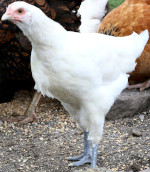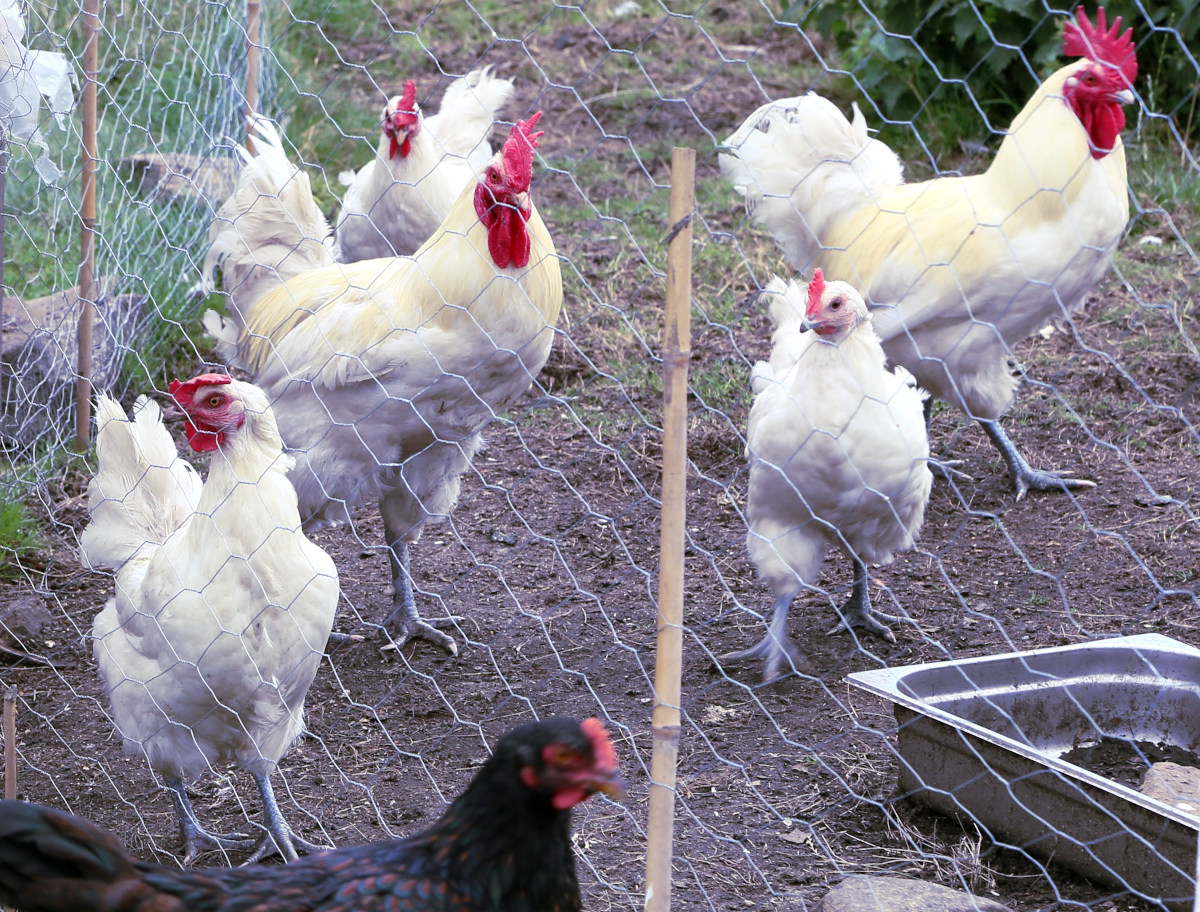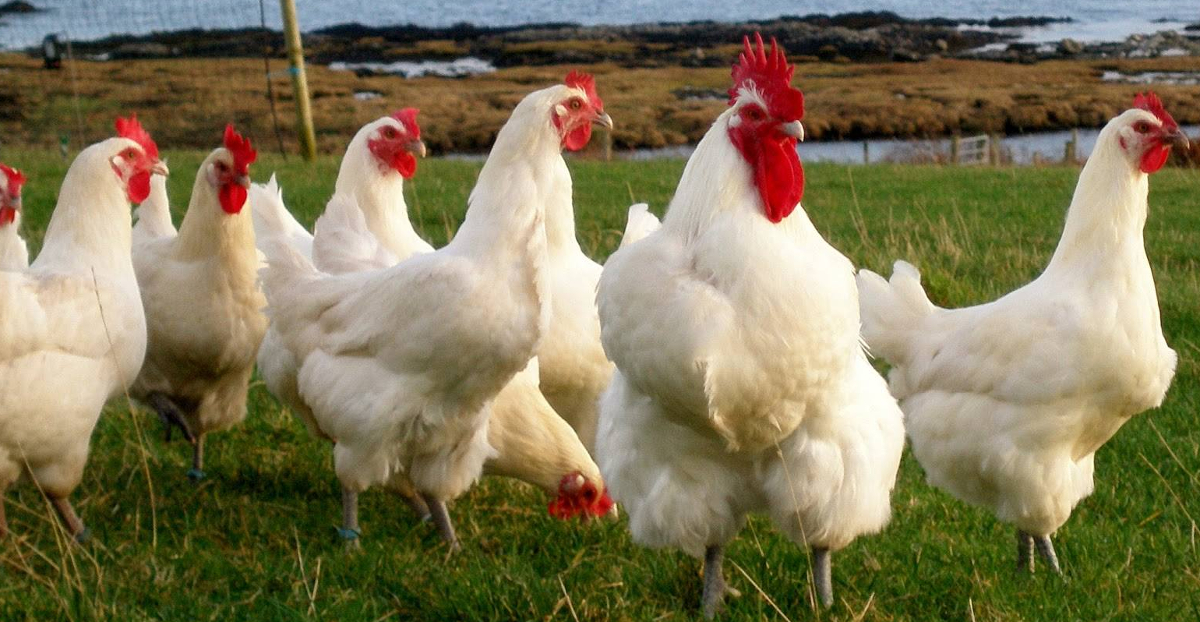Bresse Gauloise
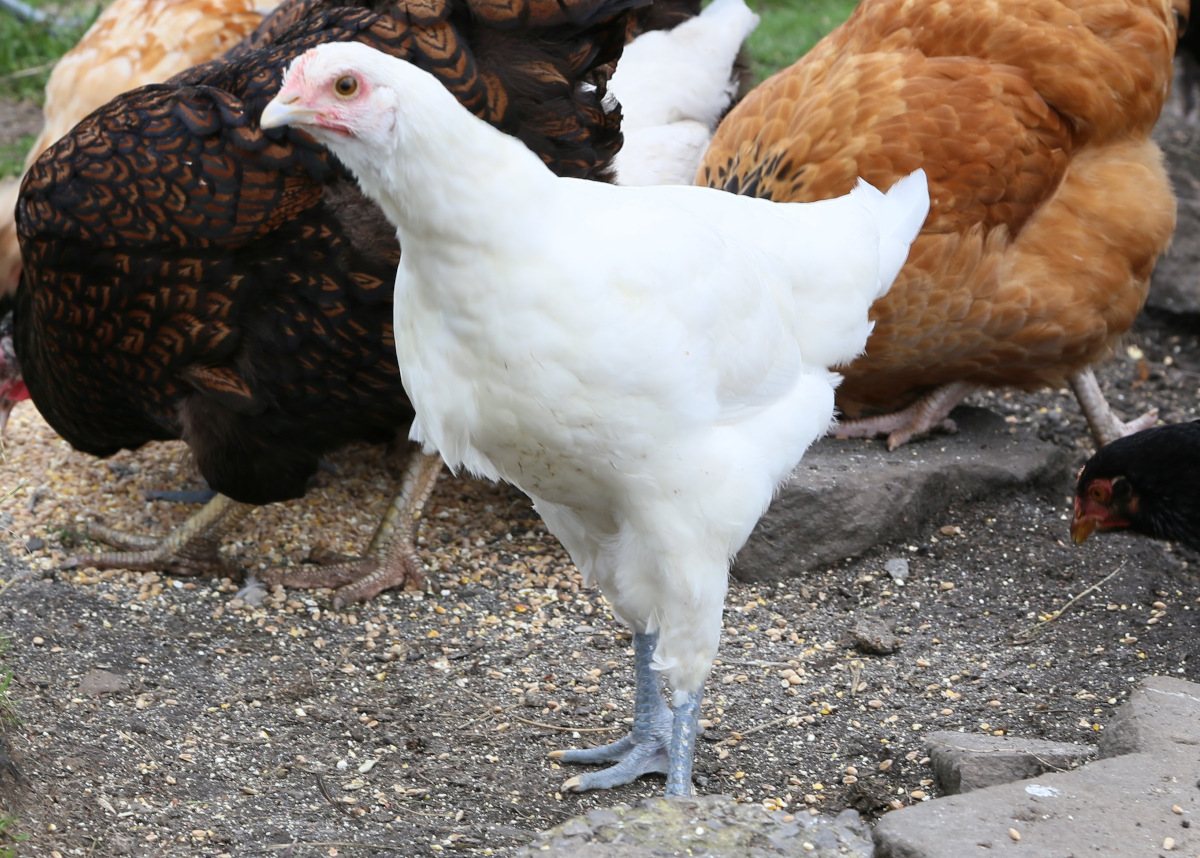
Table of Contents
The Bresse, or more correctly La Gauloise, the French chicken, from the bresse region has become a coveted breed around the world and especially in the United Kingdom. Although not as you might expect for it’s value as a meat bird.
As a breeder I see a lot of requests for birds and eggs as people think they are the perfect dual purpose bird. Somehow the mistaken belief that a meat bird can easily be kept in a backyard flock has come about.
Bresse chickens are quick growing - the Point Of Lay for this bird is around 16 weeks and it has a reputation as a good, if decidedly seasonal, layer especially with our short winter days.
Below: A day old La Bresse Gauloise chick.
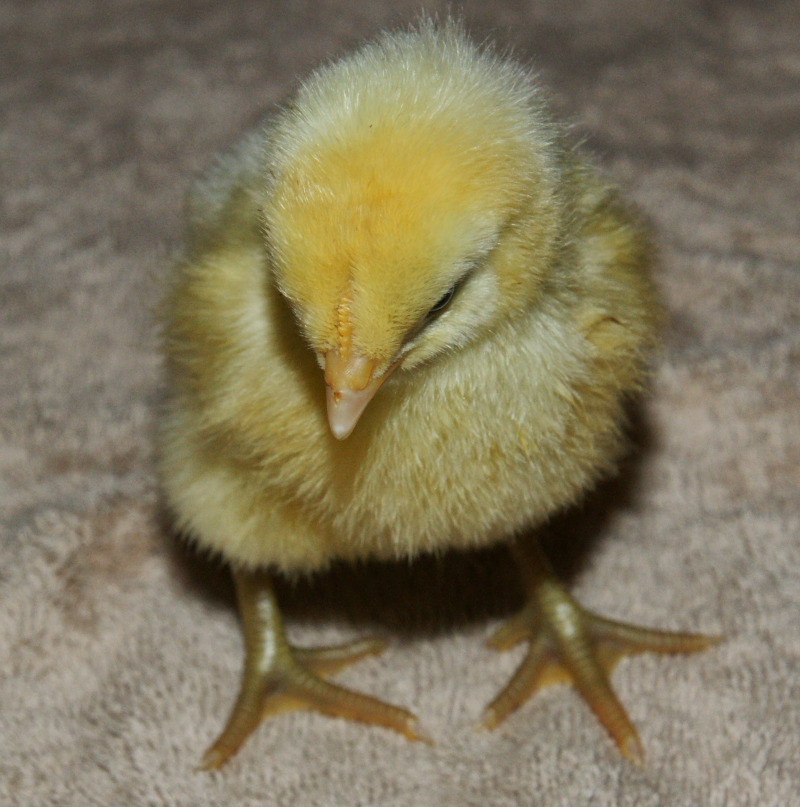
A la bresse gauloise day old chick above. This is a newly hatched le bresse Gauloise chick, although there is a hint of them, the characteristic blue legs have yet to develop.
About the Bresse breed :
The Bresse Gauloise is a French breed of domestic chicken. The poultry of the Bresse region have long enjoyed a high reputation. Poulet de Bresse may be produced only from white chickens (the Bresse de Bény variety) of the Bresse breed, raised within a legally defined area of the historic region and former province of Bresse, in eastern France. It also ned to be kept in a certain way and prepared for slaughter by reducing it’s daylight hours.
The sale of bresse is strictly controlled and you can get into quite a lot of trouble if you think you can breed and sell them for meat.
La Bresse Gauloise history.
The first documentation of the chickens of Bresse reportedly dates from 12 November 1591, when the citizens of Bourg presented two dozen birds to Joachim de Rye, Marquis de Treffort. In the early nineteenth century, the lawyer, politician, epicure and gastronome Jean Anthelme Brillat-Savarin (1755–1826), who was born at Belley in the Ain, is supposed to have described the Bresse chicken as "the queen of poultry, the poultry of kings".
Like the La Flèche, which was raised and fattened in a similar fashion, the Bresse chicken had high standing in the market. Nevertheless, by about 1900 the breed had virtually disappeared and Its recovery was due to fancy breeders, who selectively bred a sufficient number of white chickens for the breed to become stable.
A new breed standard was drawn up in 1904. The Bresse name, used for both chicken products and for the dinde de Bresse, the turkey of the area, received legal protection on 22 December 1936.
It originates in the historic region and former province of Bresse, in the regions of Rhône-Alpes, Bourgogne and Franche-Comté, in eastern France. Because of legal restrictions on the use of the name, only white chickens raised within that area may be called "Bresse". Outside the region they are given the name "Gauloise".
Below: A comparison between a Bresse chicks and a light Sussex chick showing how much faster Bresse grow.
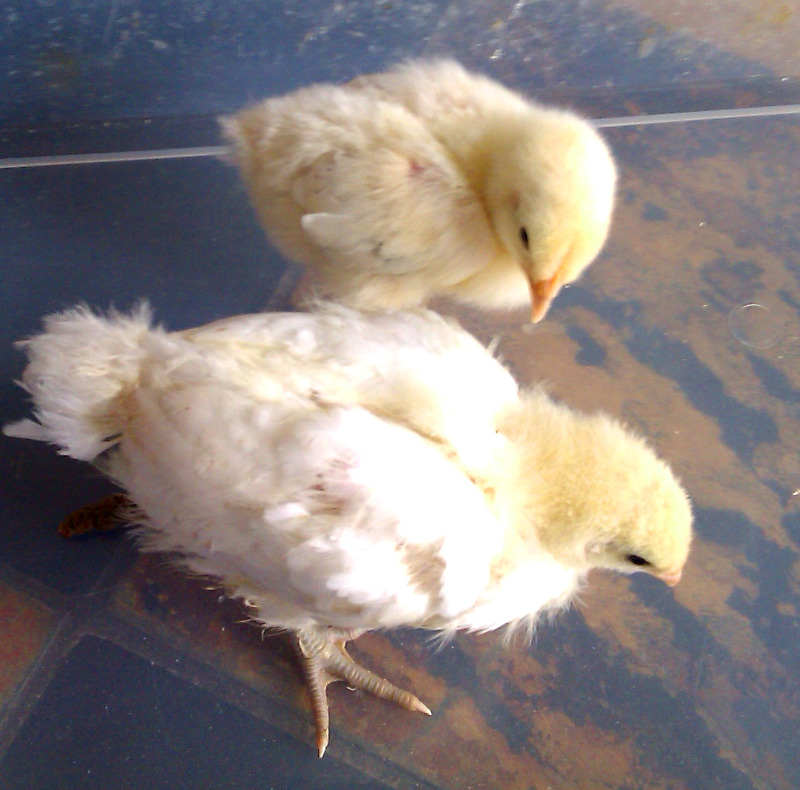
The bird grows fast, see the comparison between a light Sussex chicks and a bresse chick above. They are both the same age. My overriding memory of the first time I held a bresse was how heavy the bird felt for its size, and how much it disliked being held.
The birds are kept free range for at least four months. From about 35 days they are fed cereals and dairy products; the diet is intentionally kept low in protein so that the birds will forage for insects. They are then "finished" in an épinette, a cage in a darkened fattening shed, where they are intensively fed on maize and milk. Poulets or pullets are fattened for two weeks, and slaughtered at a minimum age of four months and a minimum weight of 1.2 kg; poulardes or large hens are fattened for four weeks and slaughtered at five months, when they weigh at least 1.8 kg; chapons or capons are also fattened for four weeks, and are slaughtered at eight months or more, at a minimum weight of 3 kg.
The birds are marketed with the head and characteristic slate-blue legs, traditionally a sign of authenticity. The left leg carries a metal leg-ring with the name of the producer.
A few reasons you may not want to keep this particular breed:
I have found them to be tetchy, flighty and easy to spook and when they are chicks they are real bullies.
They have a surprisingly large appetite – the phenomenal growth has to come from somewhere and they have a heavy frame to maintain when fully grown. They are expensive to keep as backyard birds.
This bird has to be free ranged. With cover. Especially as the birds are not that cold hardy they need shelter from the bad weather and windy conditions.
Poor egg and shell quality. Mine have always been quite good layers but very seasonal, they knock off in October and don’t start until March, and I never found the eggs that nice to eat and the break easily. The bird produce one a day during the laying season and easily reach 200 to 240 eggs in the year.
The eggs also seem to be devoid of a bloom so incubation is a challenge. Bresse eggs also need to be incubated separately as they need to be incubated dry or they will not lose enough moisture to hatch. Washing the eggs is a no-no and only perfectly clean and fresh specimens should be incubated.
Here in the United Kingdom they have been crossed with leghorns to improve the egg and laying so don’t buy upright tall birds as they are unlikely to be pure bred.
Bresse colours:
Four colours are recognised for the Bresse Gauloise, three of them linked to areas within Bresse, the Bresse de Bourg is "grey" (silver-pencilled); the Bresse de Bény is white, the Bresse de Louhans is black; a blue variety has recently been created. White Bresse de Bény chickens and capons raised in the area of Bresse have appellation d'origine contrôlée status and are marketed as poulet de Bresse. It is regarded as a premium product and command higher prices than other chickens, the best birds are sent to the president yearly.
Below: A Bresse grower.
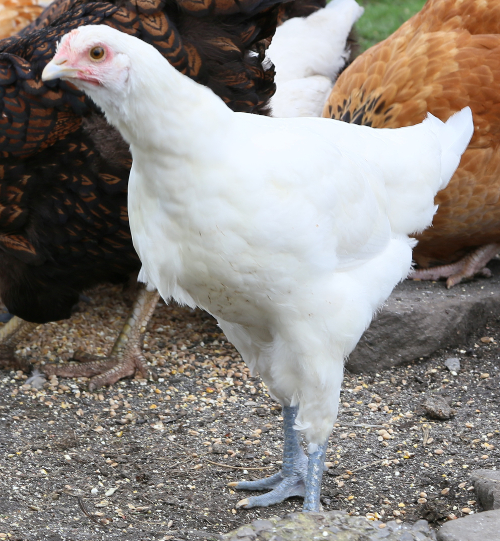
Above is a young bresse grower. Notice the really blue legs.
The Bresse Gauloise available in 4 varieties:
The blue variety - Similar colouring to the Andalusian.
The White variety - This is the common variety that is available in the United Kingdom at the moment although we also had the black for a few years. Serious faults: strong yellowish tints in the plumage.
The grey (white black pencil) - We know this pattern as the silver pencilled, red leakage or block colours are defects.
The black Gauloise - Black plumage with green reflections, or iridescent beetle sheen. Serious defects: presence of red feathers, white or coloured. The black variety, “the Bresse of Louhans”, was the lightest of the three, but in the same time was the best layer, and their eggs were the biggest.
As far as their temperament is concerned, the Bresse were true farm chickens that preferred sleeping in trees overnight. According to their ancestry, the Bresse were active foragers, going far from their house in search for food. Next to their fame as meat-producers, they were also known for their big white eggs.
Before being prepared for the dinner plate the bird is confined with long nights to stop egg laying.
The history of the Bresse wasn’t always so shiny. Around the year 1900, the breed was almost extinct because of the many crossings. Luckily, there were some people who remained true to the pure breed. In 1904 a new Standard was issued and a rehabilitation of the Bresse was begun. The “Bresse” brand name has been legally protected since the 22nd of December, 1936, and only the birds that measure up to the standard can be called “Bresse”.
Not to be mistaken for the Gauloise Doree (gold salmon), another ancient and very rare French poultry breed.
The white is also available with a pale crest.
The le bresse Gauloise breed standard:
ROOSTER: 2.7kg
Body. -Well proportioned, elongated, with a large full chest. Short neck amply garnished with fine, long feathers. Comb – straight, medium in size smooth. Red face. Eyes. - Grand, Expressive, iris as dark as possible. The brown eye iris, represents the desired type for all varieties. Thighs. – Strong and Proportional. Plumage. –Tight and smooth to the body. Abdomen. -Well Developed. Wings. –Small and Tight to the body. Tail. - Well developed sickles. Must form an acute angle with the back line. The leg colour is probably the most well-known of the characteristics of the bresse. Legs - Colour blue steel.
The feathers should be white and the bird is a flat boat shape a not an upright chicken like a leghorn.
Below: A fully grown La Bresse cockerel.
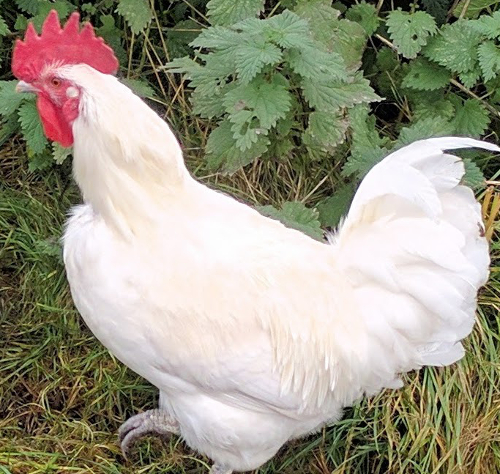
HEN: 2.2kg
Much the same except for the usual differences and slightly lighter weight and smaller size.
Origin. -Region of Bresse. It should however be noted that this designation (Bresse) only applies and cannot be implicitly used only within a geographical area, the Bresse area, defined and protected by law.
Below: My flock of Bresse chickens.
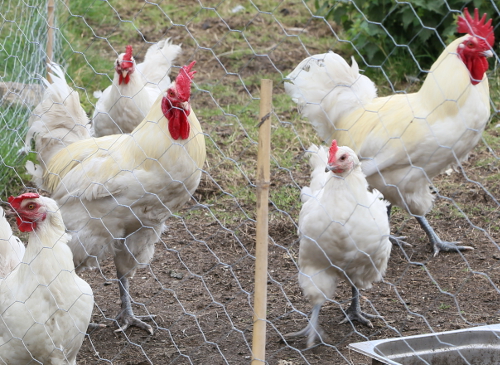
Hatching eggs. -Minimum: 60 grams - white shell.
Type and purpose of breeding is to provide a medium sized chicken, elongated, elegant, lively and particularly thin frame.
For hatching eggs for the Le bresse Gauloise - Please contact us at bresse@bresse-gauloise.org.
